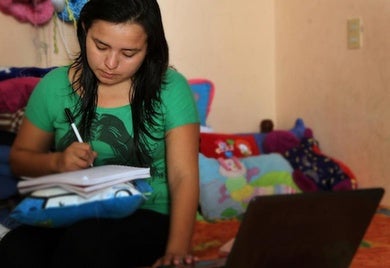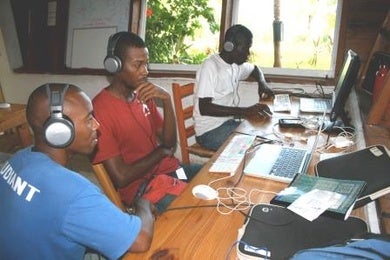
STEM minus Women = Private Sector Problem
By Kristin Dacey & Sanola Daley* Math and Science are for Men Women are not smart enough to be engineers. Women are not good at math. Isn’t this why globally men earn 70% of doctoral degrees in mathematics and the world rejoiced recently that a woman – Maryam Mirzakhani –won the top prize in mathematics for the first time?

MOOCs: The region's next big thing?
What do massive open online courses (MOOCs) have to do with private sector development in Latin America and the Caribbean? The concept is to create fee and open content for students to reach scale and allow access, impacting not just the students in a physical classroom but thousands of students who participate via the internet. MOOCs enable people interested in learning to take a course online on their own time to learn about an interesting topic, develop a new skill for work or learn how to deal with a new problem. Students can also take courses from accredited schools around the world.

How to mainstream impact investing?
We have consensus that Impact Investing is a fast growing field attracting a lot of attention. The Monitor Group estimates it could grow to $500 billion in the next 10 years, whereas others estimate this figure in the trillions. However, we still lack consensus on what exactly Impact Investing is and what is needed to bring it mainstream. In Tuesday’s Inter-American Development Bank (IDB) and GIIN Forum on Impact Investing in Latin America and the Caribbean, GIIN's CEO Luther Ragin defined Impact Investing as an investment made by an investor with the express intention of 1) achieving positive social and/or environmental benefits and 2) earning a rate of return.

Bring your own WHAT to class???
Seguir a @BIDSecPriv BYOD, not to be confused with BYOB, stands for Bring Your Own Device and is an emerging trend in education. With the penetration rate of mobile and other devices skyrocketing both globally and in Latin America and the Caribbean (LAC), many youngsters are simply inseparable from their devices. The number of mobile subscriptions was estimated to reach the seven billion mark in 2013, higher than the human population (Faille & Morrison, 2013).

Wish there were more hours in the day? Distance learning can maximize time and earning potential
Doesn’t it always seem like there aren’t enough hours in the day? How can we possibly fit it all in? The same is true for young people in Latin America and the Caribbean - especially those in lower income or vulnerable communities. For the high school graduates, many aren’t able to go directly to university for financial, family or other reasons. For example, Estacio, a large private university in Brazil, estimates that approximately 40% of high school graduates in Brazil go directly to university. Many others start a job, or a family or both.

Can innovations in healthcare technology leapfrog to better solutions?
In our experience at the IDB, healthcare systems in many countries in Latin America and the Caribbean (LAC) suffer from severe resource constraints. Competing health priorities, budget restrictions, staff shortages and general technological deficiencies leave large segments of the population without basic treatment.